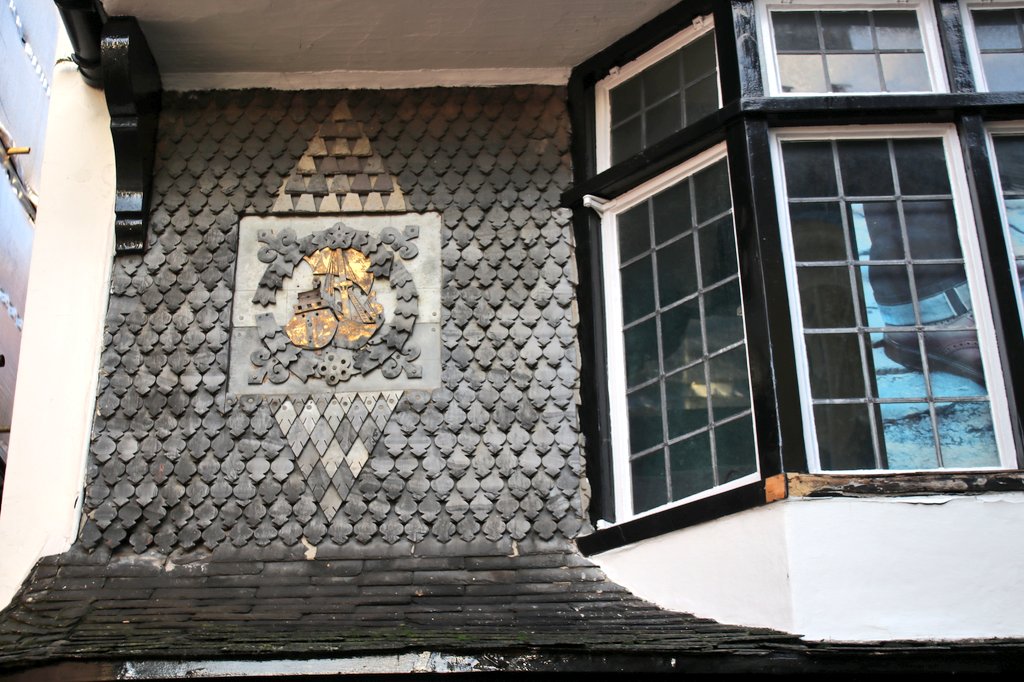
Today's thread will be my last one for a while about Exeter. It's about some of the historic houses & buildings that line the city's streets that survived despite the passage of time, bombing & redevelopment etc. Starting with Tiddy House, on Tudor Street. #tudortuesday 1/6 

There is some uncertainty when Tiddy House was built, but it is likely to have been built by Isaac Burche the Elder, a maltster in the 1630s or early by Thomas Tuberville, Bailiff of Exeter, what ever its date it is a great survival of yesteryear. 2/6 

On the front are 17C decorate slate tiles and 3 coats of arms of families that have a history with the house. The 4-storey building is supported by its timber frame construction. For a period until 1994 it became a restaurant, but now it is back to being a private residence. 3/6 





Another building that caught my eye with slate tiles (reproductions) is 1 & 2 Catherine Street, currently a shoe shop. Probably C15 in date. I didn't see but apparently many interna features survive incl. original screens, fireplaces, garderobes & late C16 painted decoration 4/6 



The last structure I'll highlight is the guildhall's portico built in the 1590s. 4 granite columns support the rest of the Beerstone structure. The whole cost £791 6s 7d, not an insignificant sum. I've not been inside, but info can be found here. exeter.gov.uk/media/1027/gui… 5/6 



There are MANY great buildings and structures to look at and explore in Exeter from houses, almshouses, churches, fortifications, medieval tunnels (for water pipes) etc etc. I hope you've enjoyed reading the threads for last few days looking a some aspects of historic Exeter.5/5 





• • •
Missing some Tweet in this thread? You can try to
force a refresh






















